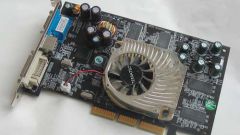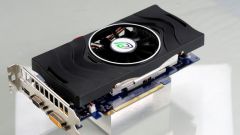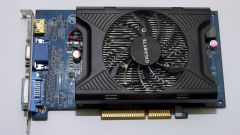Instruction
1
Go into the program settings of the video card in several ways. From the start menu, go to "control Panel". If you have the display control Panel by category, switch to classic view - click the label in the upper left of the window. In the opened window select the icon for your video card and click on it with the left mouse button. For example, if you installed the NVIDIA card, in control Panel icon will be the original manufacturer and the caption "NVIDIA Control Panel".
2
To open the settings panel of the video card, you can go the other way. Open the folder "My computer", select local disk (by default IN video card is installed on this drive). Navigate to the folder "Program Files" and select the folder corresponding to the name of your graphics card. In the case of NVIDIA, the folder will be called "NVIDIA Corporation". Find in the selected folder icon is the control panel of your video card and click on it with the left mouse button. For NVIDIA – folder "Control Panel Client", and the icon file "nvcplui.exe".
3
There is another way of calling the settings panel of the video card. Click on any blank area of the desktop with the right mouse button. In the drop down menu click on "Properties" any mouse button to cause a window "display Properties". Go to the Settings tab and click the Advanced button to open the Properties window module, connect the monitor and (the name of your graphics card)". In the dialog, navigate to the tab with the name of your graphics card and click "Start Control Panel".
4
If you don't know which graphics card you have installed, specify its name. To do this, from the desktop click the right mouse button on the icon "My computer" in the drop-down menu, select "Properties". In the properties window click the Hardware tab and click "device Manager". In the opened window, find "display Adapters" and expand the directory by clicking on the "+" icon or double-clicking on the name of the row. The notation will be the name of your graphics card.
5
More information on the card can be accessed through the DirectX diagnostic tool. To do this through the menu "start" select "Run". In the empty field type "dxdiag" without the quotes and spaces. Wait until completed data collection on your system. Navigate in the window that opens on the tab "Display". Information about graphics is contained in the "Device"section.
Note
Question: where to find the settings the Nvidia "Performance and quality"??The answer: right in the tray next to her watch the Nvidia icon on it right click and a menu will get the necessary.
Useful advice
How to install and configure the video card? You don't know how to install a graphics card? Then this article is written especially for you. If you are not sure which slot does your graphics card, check the instructions for use of the card. This manual can be found in the box where lay your new video card. Once you have inserted the graphics card into the correct slot, you must perform the following actions






